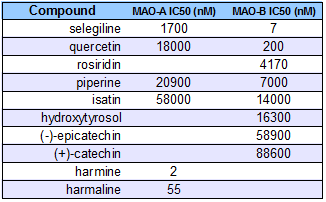As indicated below, cacao already contains an MAOI. Would taking an MAOI medication be contraindicated with large doses of cacao (supplemental cacao)?
Again, although theorized for some time, it has now been proven that cacao contains MAO inhibitors known as tetrahydro-beta-carbolines that potentiate and positively flavor entheogenic compounds. (Naked Chocolate, David Wolfe & Shazzie) | http://books.google.com/books?id=6wHYcIds-2kC&pg=PT135
Tomas Herraiz. "Tetrahydro-β-carbolines, Potential Neuroactive Alkaloids, in Chocolate and Cocoa", J. Agric. Food Chem., 2000, 48 (10), pp 4900–4904 | http://freakshare.com/files/s1120te...ive-alkaloids-in-chocolate-and-cocoa.pdf.html
Again, although theorized for some time, it has now been proven that cacao contains MAO inhibitors known as tetrahydro-beta-carbolines that potentiate and positively flavor entheogenic compounds. (Naked Chocolate, David Wolfe & Shazzie) | http://books.google.com/books?id=6wHYcIds-2kC&pg=PT135
Tomas Herraiz. "Tetrahydro-β-carbolines, Potential Neuroactive Alkaloids, in Chocolate and Cocoa", J. Agric. Food Chem., 2000, 48 (10), pp 4900–4904 | http://freakshare.com/files/s1120te...ive-alkaloids-in-chocolate-and-cocoa.pdf.html
Last edited:

